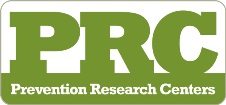Physical Education (PE) during the school day has steadily declined in NYC schools. Currently, elementary schools are having a difficult time meeting the New York State Education Department (NYSED) mandate of 120 minutes per week of physical education for grades K-6. As a result of the ever growing childhood obesity epidemic and the lack of physical activity time dedicated during the school day, the NYC Strategic Alliance for Health (SAfH) and I have worked with partners to create a campaign that aims to reform physical education in NYC public schools.
Organizing SAfH’s campaign to reform physical education in NYC schools has been both a challenging and rewarding experience for me. When I was first tasked to organize this campaign I knew very little of the actual problems schools were facing when incorporating PE into their daily schedules. It wasn’t until after speaking with several community based organizations, teachers, principals and parents that I was able to begin to understand the challenges and barriers to implementing PE during the school day. Barriers such as the lack of funding, lack of space, scheduling conflicts, academic pressures, and the need for professional development all have a role in impacting why PE does or does not happen. My conversations with these same people have also provided me with recommendations that can reform PE, such as: Revamping the NYSED PE policy and adding accountability measures, Adding a percent (%) of time within the required minutes of PE for ‘physical activity’, Adding quality PE programs, and increasing collaboration between the NYC DOE and community based organizations that provide physical activity opportunities for students. These ideas could be the conversation starters that will make PE a primary obesity prevention priority.
I have also learned that attempting to organize a city-wide campaign that attempts to establish a system wide change for a bureaucracy is a tremendous task. I have had many discussions with a wide range of organizations from city and statewide coalitions to government organizations and community-based agencies, all of whom acknowledge the need to reform physical education. While they see the need to reform they struggle with what is the appropriate response. Digging deeper with these groups, I realize while they want policy and systems change they are not explicitly chartered to advocate for a new policy.
Even though the conversations with the city wide and statewide organizations were fruitless for the campaign, I still need to create a constituency of supporters. Our campaign had to change from focusing on organizations and agencies to the group that could understand the positive impact of PE reform which were the parents. After my first meeting with parents, it became obvious to me that they were aware of the lack of physical activity in the school day and that they are in support of reform. However, given all of their demands they are not always sure that they can commit to a campaign that requires a percentage of their time. I was advised by parents, that to make the most use of their time my message had to differ from the abundance of competing health messages they receive on a daily basis. Uncovering how to engage parents on a campaign that connects them to the lives of their children could better utilize a parent’s time and involvement in any initiative.
These obstacles that rose from organizing were helpful in the continual development of the campaign. To keep all groups on the same page as our campaign goal, we had to become more specific while still encompassing the major concerns of the coalition. In developing the goal, I learned the importance of fine tuning the campaign message to attract and maintain the interest within our coalition. While the lack of involvement from some organizations was discouraging it did not deter me from outreaching to other organizations that were ready to take action. Although, I may have wanted things to happen faster developing a grassroots campaign takes time and within that time, changes occur which I’ve learned to quickly adjust and adapt to.
Continual outreach and relationship building is essential for the success of this campaign and even though our grant is coming to an end this fall, I am hopeful that the work we have done so far will benefit future organizations that will work on similar issues. Learning from our failures and successes may assist another organization in searching for alternative routes to organizing a grassroots campaign.


